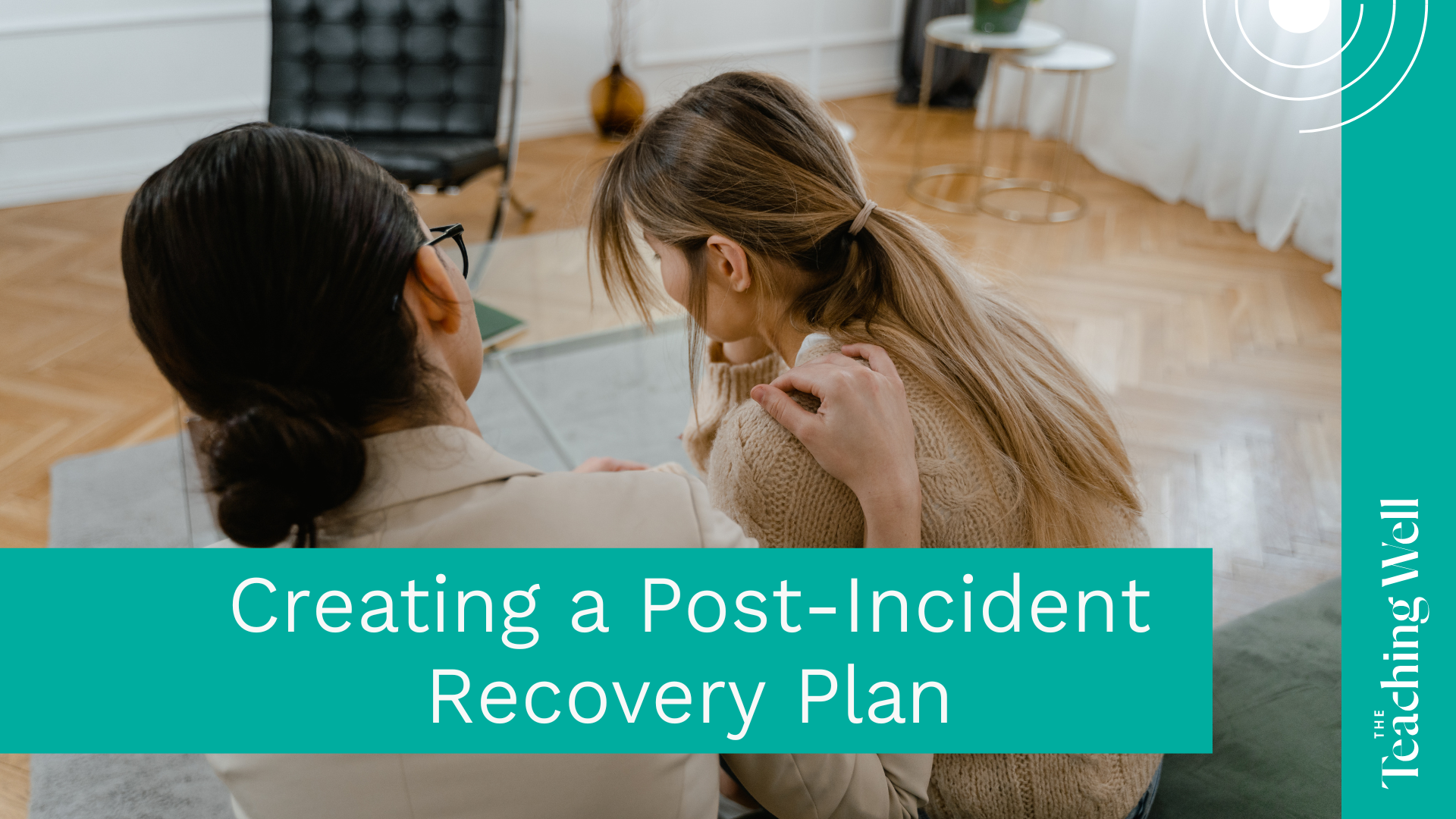Creating a Post-Incident Recovery Plan
Picture this: A principal was kicked, hit, bit, and scratched by a young child who was lashing out at their peers and teachers. The principal was doing her job, intervening in an escalated situation to ensure the other children and the teacher were safe and learning could proceed. Another adult was there to help her with the situation, but even with two adults, the child had the upper hand as their fight response controlled their young body. There was no way around it: the parent would need to come pick up their child.
If you are a principal or school leader, this scenario is likely very familiar to you. If you’re a principal, you also know that the incident is only part of the stress. When the child is out of the building and back in the care of their parents, you’ll still need to document what happened, check in on the other adults and students affected, and clean up the literal mess in the wake of the meltdown. On top of it, you are expected to do this even though you will often face criticism from teachers and other stakeholders about how you handled the interaction, how quickly you followed up to share the resolution, and why your intervention didn’t solve the outburst in the first place.
What often gets overlooked is time for the leader to ensure their own safety and to let their fine-tuned stress response run its course to bring them back to a regulated state.
What if instead of school leaders habitually bypassing their own basic needs, they were honored as humans who need care too?
What if the school leader were encouraged to sit down, take some deep breaths?
What if someone brought the leader some refreshing water or a cold washcloth and helped them clean up their fresh wounds?
What if the leader had a private space to cry, to stomp her feet in anger, or be witnessed in the courage it takes to do this part of the job?
Elementary teachers and leaders are on the front lines of the emotional fallout of kids who are just learning to recognize and manage their emotions. As a society we seem somewhat willing to acknowledge this learning curve in kids, but less willing to support the adults who are supporting the children through this journey.
At The Teaching Well, we see another way. And part of that is building your own Post-Incident Recovery Plan, which is part of the Continuous Replenishment Cycle we featured here. Just as you have a protocol for dealing with the situation, having a protocol for caring for yourself afterwards is critical. When you are depleted, it’s too hard to assess what you need and take action.
These might sound basic because they are. In the aftermath of a crisis, it’s our basic needs that have to be attended to. If you’ve created your plan in advance, it’s much easier to read and enact your plan than to try to think clearly in the moment. Share it with someone at work and ask them to support you in following it when the next crisis hits. As a school leader, it’s not a matter of if, but when you’ll next need to implement your Post-Incident Recovery Plan.
If you do not have direct support from The Teaching Well for co-regulation and de-escalation when you need it, remember that some of our practices and affirmations are just a tap away here (Qi Gong with Bong), here (Centering Practice with Jill). If you are ready to create your own Post-Incident Recovery Plan, you can download a blank copy here.


